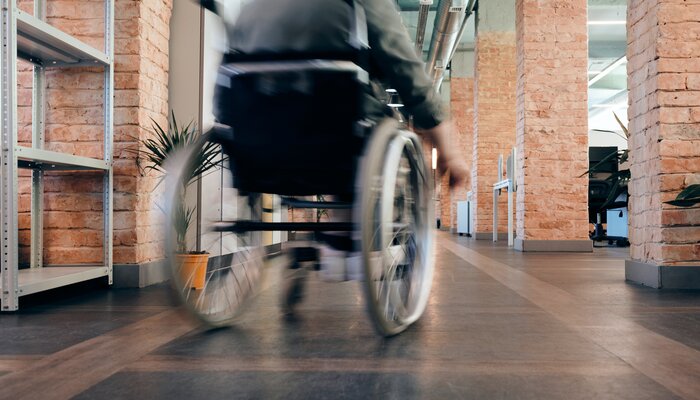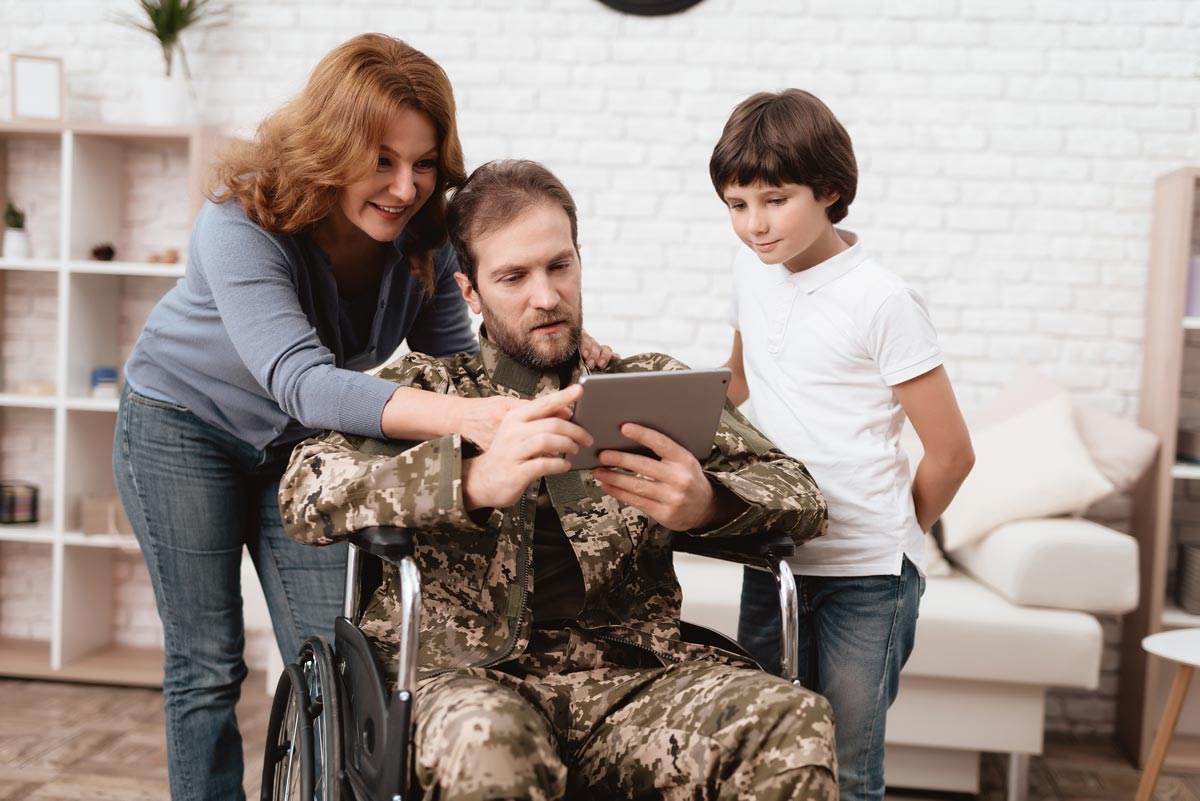As disabled individuals, we often face financial challenges when it comes to obtaining necessary medical equipment. Fortunately, there are ways to access free or discounted resources. Government programs, nonprofit organizations, and even online marketplaces offer options to ease these burdens. But how do we navigate this maze of opportunities and make the most of what's available? Let's explore the avenues that can help us improve our quality of life.
Key Takeaways
- Nonprofit organizations like the Wheelchair Foundation offer free or discounted medical equipment for those with disabilities.
- MedicareA U.S. federal health insurance program for people aged 65 and older, and for some younger people wi... and MedicaidA U.S. government program that provides health coverage to eligible low-income individuals, includin... provide coverage options for durable medical equipment with eligibility based on specific criteria.
- Online marketplaces such as eBay offer second-hand medical equipment at reduced prices for disabled individuals.
- Veterans Health Benefits from the VA support veterans in obtaining essential medical equipment at little or no cost.
- Donation networks like Freecycle and Craigslist provide accessible options for acquiring free or low-cost medical equipment.
Understanding the Financial Challenges of Medical Equipment
When we consider the financial challenges of acquiring medical equipment, it becomes evident just how overwhelming the costs can be for many disabled individuals and their families.
These expenses often include wheelchairs, prostheticsArtificial devices that replace missing body parts, such as limbs, often used after amputations., or communication devices, each essential for improving quality of life but potentially costing thousands of dollars. We often underestimate how these costs can stretch a family's budget thin, leaving little room for other necessities.
Understanding these challenges helps us empathize with others' struggles. Many families face difficult choices between necessary medical equipment and other financial commitments.
It's vital to recognize that these challenges aren't just about money; they impact emotional and mental well-being too. By acknowledging these difficulties, we can better support one another in finding solutions and resources to ease the burden.
Government Programs for Medical Equipment Assistance

Let's explore how government programs can help us access the medical equipment we need.
Medicare offers various coverage options, while Medicaid provides assistance programs tailored for eligible individuals.
For veterans, the Veterans Health Benefits can be an essential resource in obtaining necessary medical equipment.
Medicare Coverage Options
Steering through Medicare coverage options for medical equipment can be intimidating, but understanding a few key programs can help us make informed decisions.
Medicare Part B covers durable medical equipment (DME) necessary for medical purposes. This includes items like wheelchairs, walkers, and hospital beds. To qualify, the equipment must be prescribed by our healthcare provider and supplied by a Medicare-approved vendor.
We should also consider Medicare Advantage (Part C) plans, which may offer additional coverage for medical equipment. Comparing different plans can reveal extra benefits not included in Original Medicare.
It's essential to verify each plan's specifics, as coverage varies. By familiarizing ourselves with these options, we can access the medical equipment we need, easing the financial burden while maintaining our independence.
Medicaid Assistance Programs
While understanding Medicare options is important, exploring Medicaid Assistance Programs can provide additional support for acquiring medical equipment. Medicaid offers benefits tailored to those with lower income, including disabled individuals. Each state administers its Medicaid program, so eligibility and coverage might vary.
We should check with our local Medicaid office to understand specific benefits available.
Medicaid can cover a wide range of medical equipment, from wheelchairs to oxygen tanks. We must guarantee that the equipment we need is deemed medically necessary by our healthcare provider.
When applying, having thorough documentation helps support our case. It's beneficial to stay informed about any changes in Medicaid policies or benefits, as these can affect our access to necessary medical equipment.
Veterans Health Benefits
Maneuvering the array of benefits available to veterans, we find that Veterans Health Benefits can be an essential resource for obtaining necessary medical equipment.
As veterans, we can access support through the Department of Veterans Affairs (VA)A U.S. government agency that provides services and benefits to military veterans, including those w..., which provides a range of services tailored to our unique needs.
To better understand the benefits available, consider these steps:
- Eligibility Check: Verify eligibility through VA healthcare by visiting their website or contacting a local VA office.
- Equipment Needs: Identify the specific medical equipment required for daily living or improving health.
- Application Process: Apply for the necessary equipment through the VA, ensuring all required documentation is complete.
- Follow-up: Stay informed about your application status and maintain communication with VA representatives.
Nonprofit Organizations Offering Support
For individuals with disabilities, accessing necessary medical equipment can be a formidable financial challenge.
However, we can find hope in nonprofit organizations dedicated to alleviating this burden. Many of these groups offer free or discounted medical equipment, understanding the essential role these items play in enhancing the quality of life.
Organizations like the Muscular DystrophyA group of genetic diseases causing progressive weakness and loss of muscle mass. Association and the Wheelchair Foundation focus on providing resources without the pressure of high costs.
Insurance Coverage and Reimbursement Options
Steering through the complexities of insurance coverage and reimbursement options can be intimidating, but understanding these avenues is essential for accessing necessary medical equipment.
First, let's verify our current insurance plan to see if it covers the equipment we need. Many plans include durable medical equipment (DME) as a benefit.
Second, contact our insurance provider to understand the specific requirements for coverage, such as a doctor's prescription or prior authorization.
Third, familiarize ourselves with the reimbursement process; gathering the necessary documentation is key.
Fourth, let's consider Medicaid or Medicare if we're eligible, as they often cover a variety of equipment.
Exploring Online Marketplaces and Donation Platforms

Let's explore how we can access affordable medical equipment through online marketplaces and donation platforms.
Many people have found success by connecting with accessible donation networks and browsing affordable marketplace options.
Accessible Donation Networks
While traversing the world of accessible donation networks, we discover a plethora of online marketplaces and platforms dedicated to providing free or discounted medical equipment for disabled persons.
These resources empower us to find necessary equipment without the financial strain.
Here's a quick guide to some valuable options:
- Freecycle: A grassroots movement offering free items within local communities, including medical equipment.
- Facebook Marketplace: A platform where users can find discounted or free medical supplies from local sellers.
- Craiglist: Known for its "Free" section, where individuals often list medical equipment they no longer need.
- Nextdoor: A neighborhood-based social platform where community members share items, sometimes including medical gear.
Affordable Marketplace Options
Exploring further into the domain of accessible resources, we find a variety of affordable marketplace options that make acquiring medical equipment more feasible. Online marketplaces like eBay and Craigslist offer a range of second-hand equipment at reduced prices.
We can often find gently used items, which can be a cost-effective solution for those of us on tight budgets. Moreover, platforms like Freecycle and Facebook Marketplace sometimes feature donations or low-cost listings from individuals looking to pass on equipment they no longer need.
These platforms can be invaluable, providing us with access to necessary tools without the significant financial burden. By staying vigilant and checking regularly, we can take advantage of these opportunities to secure the equipment that enhances our daily living.
Tips for Navigating Application Processes
Steering through application processes for free or discounted medical equipment can feel overwhelming, but breaking it down into manageable steps helps simplify the task.
Let's approach this together:
- Gather Required Documents: Before starting, make a checklist of necessary paperwork such as medical prescriptions, proof of income, and identification. It guarantees we're prepared from the start.
- Understand Eligibility Criteria: Research thoroughly to know if we qualify. Each program has unique requirements, so reading the fine print saves time and effort.
- Ask for Assistance: Don't hesitate to contact program representatives for clarification. A quick call or email can resolve uncertainties and guide our next steps.
- Keep Track of Deadlines: Mark application deadlines on our calendar to avoid missing opportunities. Timely submissions increase our chances of approval.
How to Maximize Your Benefits and Resources
After maneuvering through the application processes, it's important to assure we're making the most of our available benefits and resources.
First, let's keep track of renewal dates for any assistance programs we've enrolled in. Missing deadlines can mean losing valuable support.
Next, we should regularly review our eligibility for additional programs, as our circumstances or program criteria might change. It's also wise to connect with local advocacyThe act of arguing in favor of, supporting, or defending the rights and interests of individuals or ... groups, which can provide updates on new resources or changes in existing ones.
Additionally, let's not hesitate to ask questions. Reaching out to program administrators or social workers can clarify benefit details and assure we're fully informed.
Conclusion
In summary, we recognize the financial challenges of obtaining medical equipment, but together, we can explore various avenues for assistance. By tapping into government programs, nonprofit organizations, and insurance options, we can find the necessary support. Let's also utilize online marketplaces and donation platforms to discover affordable options. Steering through these resources might seem intimidating, but by staying informed and proactive, we're maximizing our benefits and improving our quality of life.






